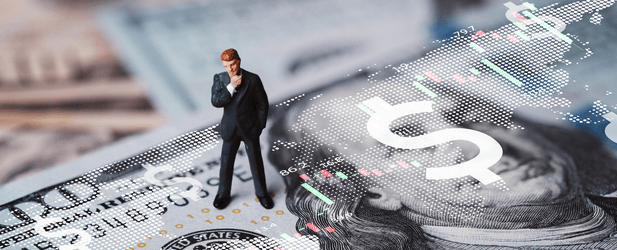
As anticipated, the Federal Reserve raised interest rates by a quarter of a point on Wednesday March 22nd. With the announcement, the Fed has now raised the federal funds rate nine times since March of last year. In early 2022, the benchmark rate hovered near zero and is now near 4.75% to 5%.
By taking the Fed funds rate to its highest level since 2007, Chairman Powell clearly remains focused on getting inflation under control. The latest Consumer Price Index (CPI) reading came in at 6% which is well above the Fed’s 2% annual target, demonstrating that there is still a clear need to rein in inflation.
As of just a few weeks ago, today’s announcement was considered a foregone conclusion. In fact, some believed the Fed could raise by half a percent at today’s meeting to further combat inflationary pressures.
Since the beginning of March, Powell and the Fed were forced to look beyond just inflation concerns. Recent regional bank failures (Silicon Valley Bank and Signature Bank) and significant stress at Credit Suisse brought on by the rapid rise in interest rates sparked broad concern about the global banking system. Regulators both in the U.S. and abroad have stepped in with various deposit backstops and emergency programs to ensure that bank depositors were kept whole and confidence in the overall banking system remains stable.
These events led some pundits and decision-makers to call for the Fed to pause their hiking path so that bank stress could subside. Yet in the end, Powell stuck with the 25 basis point raise, the Fed’s focus on price stability and reducing inflation.
What might this mean for you?
By raising interest rates, the Federal Reserve continues to work toward its goal to bring down inflationary pressures at the risk of kicking off a recession. As the cost of borrowing increases this should theoretically cool off economic activity and thus inflation. However, these efforts do not take hold overnight and must be given time to trickle through the economy. As a result, it’s likely that you’ll see higher financing rates for things like auto loans, credit cards, student loans, mortgages and elsewhere.
Financial moves in a high-interest rate environment
- Look for opportunities to eliminate high-interest debt: Pay down debt and pay yourself instead. There are several steps you can take to overcome credit card debt, including establishing a budget and sticking to it, choosing a debt repayment strategy and negotiating with creditors.
- Move excess cash into higher yielding vehicles like money market funds: It’s likely that your checking and savings accounts are not paying you very much interest. Understand your options in terms of money market funds, CDs and treasuries. Read more about Safe Alternatives to Savings Accounts.
- Ensure your deposits are FDIC-insured: Ensure you're banking with a reputable provider which provides FDIC insurance. That way, your deposits are protected up to $250,000 per depositor.
Conclusion
With the Fed having raised interest rates for the ninth time since March 2022, consumers can continue to expect higher financing rates for big ticket purchases like car loans and mortgages. In the meantime, individuals can focus on paying off high-interest debt and moving excess into higher-yielding vehicles like money market funds.
Article Topics












